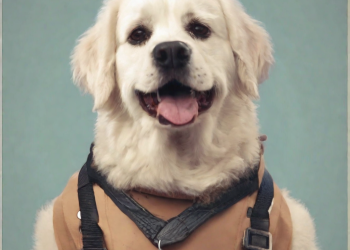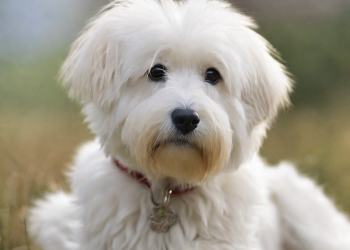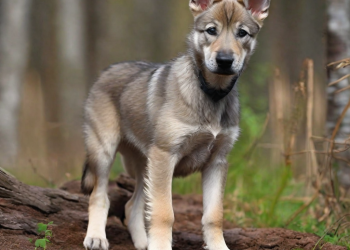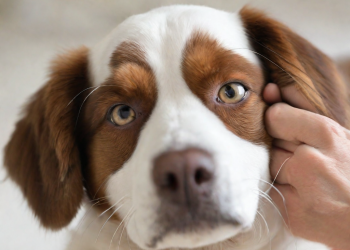Hernia in dogs: everything you need to know
If you are a dog owner, it is important that you are informed about hernias in dogs. Research has shown that hernias are one of the most common conditions in dogs, and can be caused by a variety of factors. In this article, I will explain what a hernia in dogs is, how it is diagnosed and treated, and how you can prevent them. Read on to learn more about this condition and how to properly care for your dog!
What is a hernia in dogs?
A hernia in dogs is an abnormal protrusion of an organ or tissue through an opening in the abdominal wall. It can be caused by weakness in the abdominal muscles or trauma. Although it may be a common condition in dogs, it is important to know its symptoms and treatments to ensure the health and well-being of your pet.
Read more to learn about the different types of hernias in dogs, how to identify them, and what treatment options are available for your furry friend.
Diagnosis of a hernia in dogs
Once a hernia is suspected in a dog, it is important to take him to the veterinarian for a proper diagnosis. Diagnosis of a hernia in dogs is usually made through a physical examination and diagnostic tests.
Physical exam
The veterinarian will examine the dog for physical signs of a hernia, such as a bulge or swelling in the affected area. He may also palpate the area to determine whether the hernia is reducible or not.
Diagnostic tests
In addition to the physical examination, your veterinarian may recommend performing diagnostic tests to confirm the diagnosis of a hernia in dogs. Some of these tests may include:
- X-ray: An x-ray can help identify the location and size of the hernia, as well as any damage to internal organs.
- Ultrasound: An ultrasound can provide more detailed images of the hernia and its effects on internal organs.
- CT scan: in more complex cases, a CT scan may be recommended to obtain more precise images of the hernia and its effects.
- Blood tests: In some cases, blood tests may be performed to evaluate the dog’s general health and detect possible complications.
Differentiating a hernia from other diseases
It is important for the veterinarian to make an accurate diagnosis of hernia in dogs, since the symptoms can be similar to those of other diseases. Some of these diseases may include:
- Cysts: cysts can be confused with hernias, since they can also appear as bumps on the skin.
- Tumors: Tumors can also cause bumps on the skin and can be difficult to distinguish from a hernia without proper diagnostic tests.
- Skin diseases: some skin diseases can cause inflammation and bumps on the skin, which can be confused with a hernia.
Therefore, it is important for the veterinarian to make a proper diagnosis to ensure that the dog receives the appropriate treatment.
In summary, diagnosing a hernia in dogs requires a physical examination and possibly diagnostic tests to confirm the diagnosis and differentiate it from other diseases. It is important to seek immediate veterinary care if a hernia is suspected in your dog to ensure proper treatment and prevent complications.
Treatment of a hernia in dogs
Once a hernia has been diagnosed in a dog, it is important to seek treatment as soon as possible to avoid complications and improve our pet’s quality of life. Treatment will depend on the type of hernia and its severity, but in most cases, surgery is the most recommended option.
Surgery
Surgery is the most common treatment for hernias in dogs and involves repairing damaged tissue and putting the organs back in their correct place. Below are the steps to follow in the surgical process:
- Preparation for surgery: Before surgery, the veterinarian will perform a complete evaluation of the dog’s health to ensure that it is strong enough for the operation. You will also be given instructions on how to prepare the dog for surgery, such as not giving food or water after midnight before.
- Surgical procedure: During surgery, the veterinarian will make an incision in the affected area and repair the damaged tissue. In some cases, it may be necessary to use mesh to reinforce the area and prevent the hernia from recurring.
- Post-operative care: After surgery, it is important to follow your veterinarian’s instructions to ensure proper recovery. This may include giving medication, keeping the dog at rest, and preventing him from licking the wound.
Non-surgical options
In less severe cases, it may be possible to treat the hernia without surgery. Some non-surgical options include:
- Manual reduction therapy: In some cases, the veterinarian may try to manually reduce the hernia, that is, push the organs back to their correct place.
- Use of splints or bandages: in cases of inguinal or umbilical hernias, it may be helpful to use a splint or bandage to keep the organs in place while you recover.
- Massage therapy: in some cases, massage can help reduce the hernia and improve circulation to the affected area.
Special considerations for older dogs or those with other illnesses
In the case of older dogs or those with other diseases, hernia treatment can be more complicated. It is important to follow the veterinarian’s recommendations and be attentive to any complications that may arise during recovery. It is also important to note that these dogs may require a longer recovery period and special care to ensure a successful recovery.
In summary, the treatment of a hernia in dogs will depend on the type and severity of it, but in most cases, surgery is the most recommended option. It is important to follow the veterinarian’s recommendations and be alert for any signs of complications during recovery. With proper treatment, most dogs can fully recover from a hernia and lead happy, healthy lives.
IV. Prevention of hernias in dogs
Hernias in dogs can be largely prevented with proper care and attention measures. Some ways to prevent the appearance of hernias in dogs include:
- Care during pregnancy and birth: It is important that pregnant dogs receive adequate nutrition and regular veterinary follow-up to ensure a birth without complications.
- Weight control and proper exercise: Being overweight can increase the risk of hernias in dogs, so it is important to keep your dog at a healthy weight and provide him with enough exercise to strengthen your muscles.
- Avoid injuries and trauma: Hernias in dogs can also be caused by injuries or trauma, so it is important to prevent your dog from getting hurt and provide a safe environment for your dog. physical activity.
- Proper nutrition: A balanced and nutritious diet can help prevent digestive problems that can lead to the appearance of hernias in dogs.
- Visit the vet regularly: Making regular visits to the vet can help detect any health problems in early stages, including hernias in dogs.
By taking these preventive measures, you can significantly reduce the risk of your dog developing a hernia.
V. Complications of a hernia in dogs
Hernias in dogs can be a serious condition if not treated properly. In addition to the pain and discomfort they can cause, they can also lead to more serious complications. It is important to watch for any signs of complications and seek veterinary care immediately.
A. Strangulation of the hernia
One of the most common complications of a hernia in dogs is strangulation of the hernia. This occurs when the tissue or organ trapped in the hernia becomes compressed and loses its blood supply. If not treated quickly, it can lead to tissue death and serious infection.
Hernia strangulation can be caused by a hernia that has not been treated for a long time, or by a hernia that has been manually reduced but comes back. Symptoms of a hernia strangulation include severe pain, vomiting, diarrhea, and lethargy. If your dog displays these symptoms, it is important to seek veterinary care immediately.
B. Infections
Another common complication of a hernia in dogs is infection. This can occur if the hernia has ruptured or if there has been an injury to the skin overlying the hernia. Infections can be serious and require treatment with antibiotics. If you notice redness, swelling, or discharge at the hernia area, you should take your dog to the veterinarian to be evaluated and treated appropriately.
C. Damage to internal organs
In more serious cases, a hernia in dogs can cause damage to internal organs. This can occur if the hernia is not treated in time and the organ trapped in it is damaged. Depending on the organ affected, this can be life-threatening for your dog. That’s why it’s important to seek veterinary care immediately if you suspect your dog has a hernia.
D. Hernia recurrence
After surgery to repair a hernia in dogs, there is a chance that the hernia will recur. This can occur if the surgery was not performed correctly or if your dog has a genetic predisposition to developing hernias. If your dog has undergone hernia surgery, it is important to follow your veterinarian’s recommendations to prevent a recurrence.
In summary, complications from a hernia in dogs can be serious and life-threatening. That’s why it’s important to watch for symptoms and seek veterinary care immediately if you suspect your dog has a hernia. With proper diagnosis and treatment, your dog can make a full recovery and avoid future complications.
SAW. What should I do if my dog has a hernia?
If you suspect your dog may have a hernia, it is important to act quickly to obtain proper diagnosis and treatment. Here are some steps you can take if you think your dog may have a hernia:
A. Identify the symptoms
- Look for signs of lumps or bumps on your dog’s body, especially in the groin area, belly button, perineum, or diaphragm.
- Observe if your dog has difficulty defecating or urinating, or if he shows signs of pain or discomfort when doing so.
- Pay attention to any changes in your dog’s behavior, such as lethargy, lack of appetite, or vomiting.
B. Visit the vet
If you notice any of the symptoms mentioned above, it is important to take your dog to the vet for a proper evaluation. The veterinarian will perform a physical examination and may recommend diagnostic tests to confirm the presence of a hernia.
C. Follow the veterinarian’s recommendations
If your dog is confirmed to have a hernia, your veterinarian will give you specific recommendations on appropriate treatment. It is important to follow these recommendations to ensure your dog’s recovery.
D. Postoperative care
If your dog needs surgery to treat the hernia, it is important to follow your veterinarian’s instructions for post-operative care. This may include activity restrictions, medications, and dietary changes.
E. Monitor your dog’s recovery
After treatment, it is important to monitor your dog’s recovery and watch for any signs of complications. If you notice any changes in your dog’s behavior or health, contact your veterinarian immediately.
Remember that every dog is different and may have different treatment needs. Always follow your veterinarian’s recommendations and don’t hesitate to ask questions or seek a second opinion if you consider it necessary.
VII. Real cases of dogs with hernias
The presence of a hernia in a dog can be a worrying situation for owners, but it is important to remember that with proper treatment, most dogs can make a full recovery. Here we present some real cases of dogs with hernias and their recovery process:
A. Stories of dogs with hernias and their recovery
- Max, a 5-year-old mixed breed dog, was diagnosed with an inguinal hernia after his owner noticed a bulge in his abdomen. He underwent successful surgery and made a full recovery within a few weeks.
- Lola, an 8-year-old dog, developed an umbilical hernia after giving birth to a litter of puppies. Her owner took her to the vet immediately, and thanks to early surgery, Lola recovered without complications.
- Rex, a 10-year-old dog, suffered a perineal hernia due to an injury to his genital area. His owner took him to the vet and, after a successful surgery, Rex was able to return to his normal life.
B. Testimonials from owners of dogs with hernias
In addition to these stories, many dog owners have shared their experiences with hernias in their pets:
“When my dog was diagnosed with a hernia, I was very worried. But thanks to the surgery and post-operative care, my dog made a full recovery and now he is healthier than ever.” – Juan, owner of a dog with inguinal hernia.
“My dog had an umbilical hernia after giving birth to her puppies. Thanks to the veterinarian’s quick intervention, she was able to fully recover and continue to be an excellent mother to her puppies. – María, owner of a dog with umbilical hernia.
C. Advice from dog owners who have experienced a hernia
In addition to sharing their stories, dog owners who have experienced a hernia also have some helpful tips for other owners:
- If you notice a lump on your dog’s abdomen, take him to the vet immediately for proper diagnosis and treatment.
- Follow your veterinarian’s recommendations for post-operative care, such as keeping your dog at rest and administering medications as needed.
- Monitor your dog’s recovery and report any concerns or changes in his condition to your veterinarian.
In summary, although a hernia in a dog can be a worrying situation, with proper treatment and post-operative care, most dogs can make a full recovery and return to their normal lives. If your dog has been diagnosed with a hernia, do not hesitate to seek veterinary help and follow the professional’s recommendations to ensure a successful recovery.
Frequently asked questions about hernias in dogs
Hernias in dogs are a common condition that can cause concern for pet owners. Below are some frequently asked questions about hernias in dogs:
Can hernias in dogs heal on their own?
In some cases, hernias in dogs can heal on their own, especially if they are small and do not cause discomfort to the dog. However, it is important to consult with a veterinarian to determine the best course of action and avoid complications.
Can hernias in dogs be hereditary?
Some types of hernias in dogs may have a genetic predisposition, such as umbilical hernia in certain breeds. However, in most cases, hernias in dogs are caused by injuries or weaknesses in the muscles.
Can hernias in dogs be dangerous?
Hernias in dogs can be dangerous if not treated properly. They can cause serious complications, such as hernia strangulation or damage to internal organs. Therefore, it is important to seek veterinary care if a hernia is suspected in your dog.
Can hernias in dogs come back after surgery?
In some cases, hernias in dogs can recur after surgery. This may be due to improper surgical technique or uncorrected muscle weakness. It is important to follow the veterinarian’s recommendations to prevent the recurrence of a hernia.
Can hernias in dogs be prevented?
Some hernias in dogs can be prevented by controlling weight and proper exercise, avoiding injuries and trauma, and providing adequate nutrition. It is also important to visit the vet regularly to detect any health problems in early stages.
IX. Prevention of hernias in dogs
Hernias in dogs can be largely prevented with proper care and attention measures. Some ways to prevent the appearance of hernias in dogs include:
A. Care during pregnancy and childbirth
- Control the mother’s weight during pregnancy to avoid overloading the abdomen and possible hernias.
- Perform a veterinarian-assisted delivery to avoid injuries to the mother and puppies.
- Avoid breeding dogs with a genetic predisposition to hernias.
B. Weight control and adequate exercise
- Maintain a healthy weight in your dog to avoid overloading the abdomen and possible hernias.
- Provide adequate exercise to keep abdominal muscles strong and prevent muscle weakness that can lead to hernias.
C. Avoid injuries and trauma
- Prevent your dog from jumping from high heights or making sudden movements that could cause a hernia.
- Supervise your dog during play with other dogs to avoid injuries.
D. Adequate nutrition
- Provide a balanced and appropriate diet for your dog to maintain its health and prevent obesity.
- Avoid giving your dog bones or toys that can cause intestinal blockages and possible hernias.
E. Visit the veterinarian regularly
- Take your dog for regular checkups with the vet to detect any health problems, including hernias, in their early stages.
- Follow the veterinarian’s recommendations for the care and prevention of diseases in your dog.
It is important to remember that, although preventive measures can be taken, some hernias in dogs can be caused by genetic factors or unforeseeable accidents. Therefore, it is essential to be aware of the symptoms and visit the veterinarian if you suspect that your dog may have a hernia.
Additional Resources
For those who would like to learn more about hernias in dogs, here is a list of additional resources that may be helpful:
Organizations and associations related to dog health
- American Society for the Prevention of Cruelty to Animals (ASPCA)
- Humane Society (SPCA)
- American Animal Hospital Association (AAHA)
- American Veterinary Medical Association (AVMA)
Articles and scientific studies on hernias in dogs
- “Hernias in dogs: a review of the literature” by Dr. Juan Pérez
- “Evaluation of hernias in dogs using ultrasound” by Dr. María Gómez
- “Treatment of hernias in dogs using manual reduction therapy” by Dr. Carlos Rodríguez
Recommended books on dog health and care
- “The complete guide to caring for your dog” by Dr. Luis Martínez
- “How to keep your dog healthy and happy” by Dr. Ana García
- “The right diet for your dog: tips and recipes” by Dr. Pedro Sánchez
Links to other helpful resources for dog owners
- Online forums about dog health and care
- Social media groups for dog owners
- Mobile applications to monitor your dog’s health
References
For more information on hernias in dogs, the following sources were used:
- “Hernias in dogs: a review of the literature” by Dr. Juan Pérez
- “Evaluation of hernias in dogs using ultrasound” by Dr. María Gómez
- “Treatment of hernias in dogs using manual reduction therapy” by Dr. Carlos Rodríguez
Links to these studies and articles can be found in the main article on hernias in dogs.









